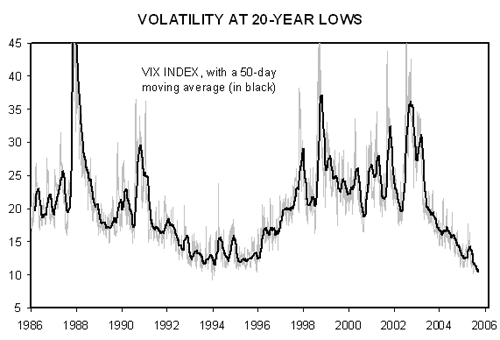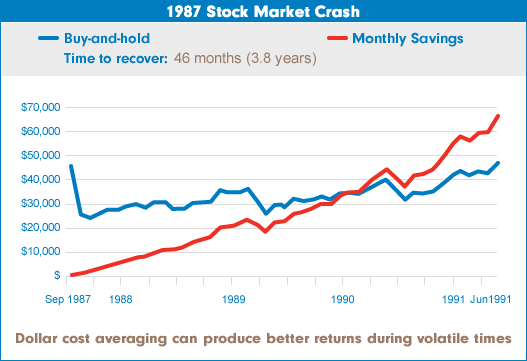Understanding Stock Market Volatility
Post on: 29 Июль, 2015 No Comment

The Keys To Profiting from Volatility in 2009
Comments ( )
By Sam Hopkins
Monday, January 5th, 2009
Market volatility, as measured by options action, reached nauseating levels in 2008.
But as you brace for big swings in 2009, get set for major profits, too.
To take full advantage of volatility, you have to know how it’s measured. Here we’ll look at the broader VIX fear gauge and at beta, which is an individual-stock volatility stat.
Keep in mind that the market isn’t some kind of Ouija board. Just scan a listed company’s profile in Yahoo! or Google Finance to see insider ownership changes, options volume and, of course, share price movement. You basically know who’s doing what and how much money is moving.
If you know too much too soon and move based on that, you can land in the clink. So, information is a tightrope we all tread to take eventual gains, and volatility is a big part of that.
Above all, it’s options volume that investors hone in on to gauge volatility and investor fear. In 2008, the Chicago Board of Options Volatility Indexthe VIXrocketed to a high level of 80 in both October and November. That VIX measure reflects a record options trading volume of 1.19 billion for the year, based on S&P 500 index options.
Right now, the VIX is sitting at just below 40.
This halving of the VIX in the past eight weeks signals stabilization and cautious optimism about the beginning of Barack Obama’s tenure. A combination of billions in infrastructure spending and newly-announced tax cuts that will garner more GOP support may restore vibrancy to American and international balance sheets.
Yet we expect some volatility to persist in the form of double- and triple-digit percentage swings in stock prices throughout the world.
The Best Free Investment You’ll Ever Make
Stay on top of the hottest investment ideas before they hit Wall Street. Sign up for the Wealth Daily newsletter below. You’ll also get our free report, Gold & Silver Mining Stocks.
Enter your email:
Beta as a Stock Volatility Measure
Now for more of an apples-to-apples comparison of volatility, we can use beta.
Beta measures U.S-listed stocks and funds by their deviation from the S&P 500. As such, it’s a relative measure and not an absolute one. A beta greater than 1 means the stock or fund you’re looking at is more volatile than the broader market. A beta below 1 means it’s steadier than the S&P.
Current trading conditions, however, do require that you maintain a relative perspective as you prune and fertilize your portfolio. If you have a stock down 20% over the past year, keep in mind that the S&P has lost nearly 35% in the same period. If you’re seeing relative gains in a company you believe in, especially one with solid recovery prospects specific to the stimulus packages being unleashed (think renewable energy, infrastructure, etc.), you’re in good shape.
Beta will capture such exceptional performance to the upside, as well as any deeper troughs the shares might have dug compared to the benchmark.
Watching international stocks and ETFs, I like to use beta to filter out global stocks that are either too aggressive or just aggressive enough for my portfolio risk appetite. Beta also helps keep things in perspective over the longer term.
Take the iShares MSCI Emerging Markets Index ETF (AMEX:EEM), for example:

As you see in the above chart, for a good 18 months the EEM soared up, up, and away from the S&P. That gave EEM a higher beta, which was a boon to investors who were long the ETF.
The dark side of beta, however, came in the form of more severe losses as the S&P turned into a falling knife. Beta then became a bane, and many EEM holders retreated to safety in treasuries, gold, and cash.
EEM’s beta is right around 1.75 at the beginning of 2009, borne out by a 17% gain in the past month vs. the S&P’s 6%.
We’re still nowhere near the levels we saw through mid-2007, but keeping volatility in mind could clue you in to possible bubble levels and get you out with profits at the top. As well as tipping you off to oversold positions that lead to market-beating bounces.
Now is the time to build positions in a few higher-beta stocks and ETFs for supercharged gains in 2009. But watch the VIX too, and always remember that volatility works both ways.
Regards,
Sam Hopkins
International Editor
Wealth Daily














